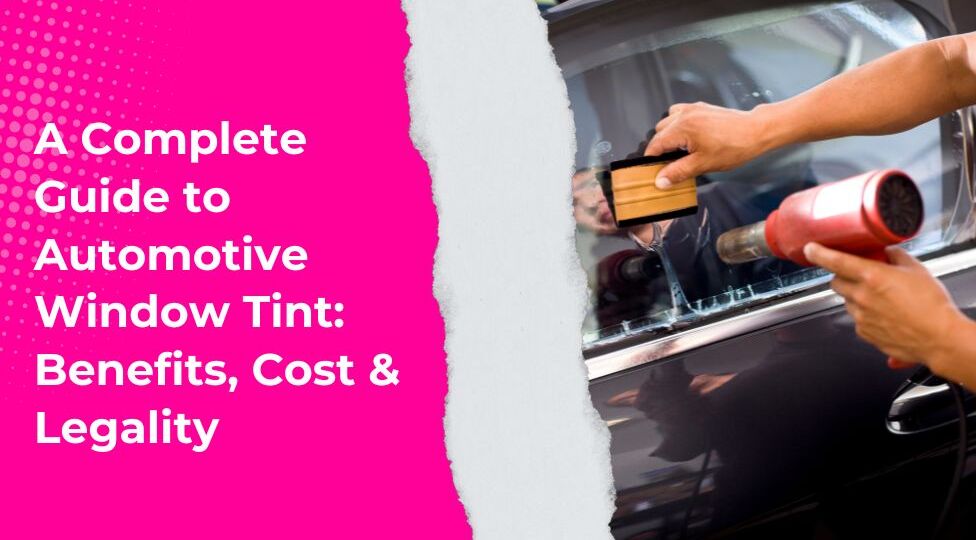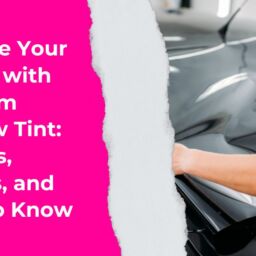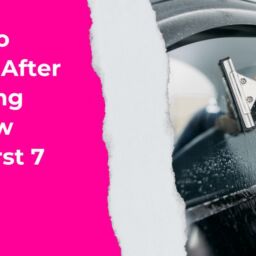
When it comes to enhancing your vehicle’s appearance, comfort, and protection, window tint is one of the most effective upgrades you can invest in. Not only does it add a sleek, stylish finish to your car, but it also delivers numerous functional benefits—ranging from UV protection to privacy and even improved fuel efficiency. Whether you’re a first-time car owner or an enthusiast, understanding your options for automotive window tint is essential.
In this comprehensive guide, we’ll break down the best automotive window tint options, explore the average cost for window tinting, and answer the crucial question, “Are window tints legal?”
What Is Window Tinting?
Window tinting involves applying a thin laminate film to a vehicle’s glass surfaces to reduce the amount of light that passes through. The film can be dyed, metallic, carbon, or ceramic—each with its unique benefits and price points.
Types of Window Tints
- Dyed Film: Most affordable; offers basic privacy and glare reduction.
- Metallic Film: Reflective surface that blocks heat effectively but can interfere with electronics.
- Carbon Film: Offers a sleek matte finish, excellent UV protection, and no signal interference.
- Ceramic Film: Premium option with superior heat rejection, UV protection, and clarity.
Benefits of Window Tinting
Tinting your car windows isn’t just about aesthetics—it brings a host of practical advantages too.
1. Heat Rejection
High-quality window tints can block up to 60% of solar heat, keeping your car cooler and reducing the load on your air conditioning system.
2. UV Protection
The best automotive window tint options block up to 99% of harmful ultraviolet rays, helping to protect your skin and prevent interior fading.
3. Increased Privacy and Security
Tinted windows make it harder for passersby to see inside your vehicle, discouraging theft and enhancing privacy.
4. Improved Driving Comfort
Reduced glare from the sun and headlights makes driving safer and more comfortable, particularly during sunrise and sunset.
5. Shatter Resistance
Some tint films add a protective layer that holds broken glass together in the event of an accident.
Choosing the Best Automotive Window Tint
Selecting the right window tint depends on your goals—whether it’s style, performance, or budget.
Consider These Factors:
- Shade/Visible Light Transmission (VLT%): The percentage of light that can pass through the film. Lower VLT means darker tint.
- Heat and UV Rejection Ratings
- Warranty and Durability
- Legal Limits in Your State or Region
Popular Tint Brands:
- 3M Automotive Window Film
- LLumar
- SunTek
- XPEL
- FormulaOne
These are widely considered among the best automotive window tint brands due to their performance, clarity, and warranties.
Are Window Tints Legal?
The question “Are window tints legal?” is one of the most frequently asked—and for good reason. Tint laws vary widely depending on your country, state, or province.
General Tint Regulations:
- VLT Limits: Most states have specific VLT% limits for front, rear, and side windows.
- Reflectivity: Restrictions on how reflective your tint can be.
- Windshield Tinting: Typically only allowed on the top few inches (AS-1 line).
- Medical Exemptions: Some jurisdictions allow darker tints for individuals with medical conditions.
🔎 Pro Tip: Always check your local DMV or road transport authority website to verify specific regulations before getting your windows tinted.
Frequently Asked Questions
How long does window tint last?
High-quality tints installed by professionals can last between 5 to 10 years, depending on the film and maintenance.
Can window tint be removed?
Yes. Tint can be professionally or DIY-removed using steamers or adhesive removers without damaging the glass.
Will tint affect my visibility at night?
Darker tints can slightly reduce visibility at night. Opt for ceramic films with higher clarity if night driving is a concern.
How to Maintain Your Window Tint
Proper care can extend the life of your tint and keep it looking great.
- Avoid rolling down tinted windows for 3–5 days post-installation.
- Clean with ammonia-free cleaners and a microfiber cloth.
- Park in shaded areas or use sunshades to minimize UV exposure.
Final Thoughts: Is Window Tint Worth It?
Absolutely. Whether you’re seeking style, protection, or performance, window tinting is a smart investment. From heat and UV rejection to improved privacy and aesthetics, the benefits are clear. With so many tint options and price points, there’s a solution for every vehicle and budget.
Before making your decision, research the best automotive window tint brands, understand the average cost for window tinting, and most importantly, ensure your tint complies with local legal regulations.



